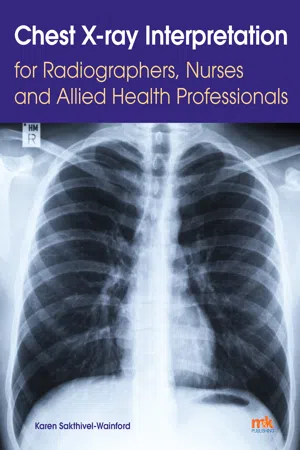
Chest X-ray Interpretation for Radiographers, Nurses and Allied Health Professionals
- English
- ePUB (mobile friendly)
- Available on iOS & Android
Chest X-ray Interpretation for Radiographers, Nurses and Allied Health Professionals
About this book
Chest x-rays are among the most difficult plain film to report. This helpful book combines a simple introduction to the basics of chest x-ray reporting with a good number of sample cases, including actual radiographs.The book begins with the anatomy of the chest x-ray, as visualised on the posterior anterior and lateral images. This is followed by a short chapter on having a systematic approach when reporting chest x-rays, then the silhouette sign as described by Felson, then chapters on consolidation and collapse, heart failure, tumours, lung nodules, chest trauma, positioning of tubes, lines and pacemakers, chronic chest conditions and tuberculosis. Finally, there is a chapter that includes 60 cases for the reader to review.Today, many different healthcare professionals are involved in reviewing chest x-rays. This book will therefore be useful for advanced nurse practitioners, accident and emergency practitioners, and major trauma practitioners, as well as trainee radiologists, radiographers, trainee reporting radiographers and junior medics.
Frequently asked questions
- Essential is ideal for learners and professionals who enjoy exploring a wide range of subjects. Access the Essential Library with 800,000+ trusted titles and best-sellers across business, personal growth, and the humanities. Includes unlimited reading time and Standard Read Aloud voice.
- Complete: Perfect for advanced learners and researchers needing full, unrestricted access. Unlock 1.4M+ books across hundreds of subjects, including academic and specialized titles. The Complete Plan also includes advanced features like Premium Read Aloud and Research Assistant.
Please note we cannot support devices running on iOS 13 and Android 7 or earlier. Learn more about using the app.
Information
1
THE RADIOGRAPHS AND ANATOMY OF THE CHEST X-RAY
Posterior anterior x-rays
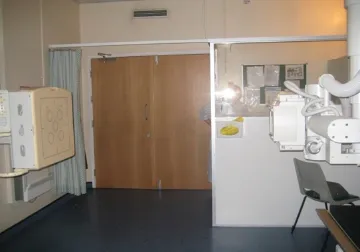
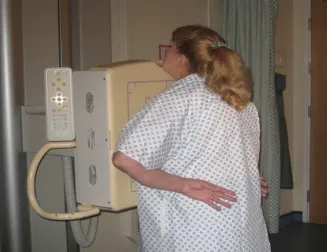
| Issue | |
| PA, AP, sitting or supine | This will affect magnification/heart size |
| Rotation | Medial ends of clavicles should be equidistant from spinous process of vertebra |
| Lordotic/kyphotic | Clavicles should be posterior end of 4th rib, not above or below |
| Scapula removed from lungs | If not, be careful with interpretation |
| Full inspiration | Inspired to 5–6.5 anterior ribs, or 10/11 posterior ribs |
| Entire lungs included on image | If not, repeat may be required |
| Artefacts | Beware that an artefact is not misinterpreted as pathology |
| Correct marker/annotations | Is the patient really dextracardia? |
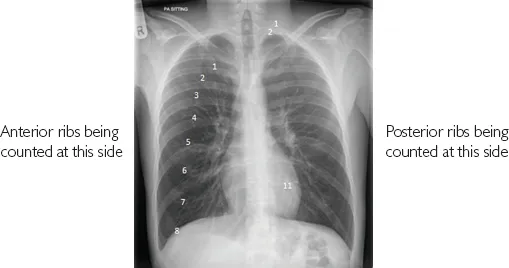
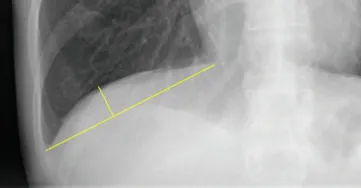
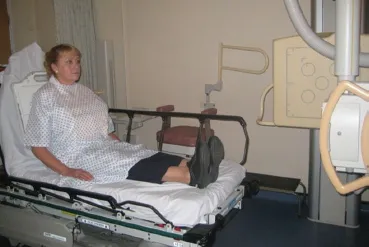

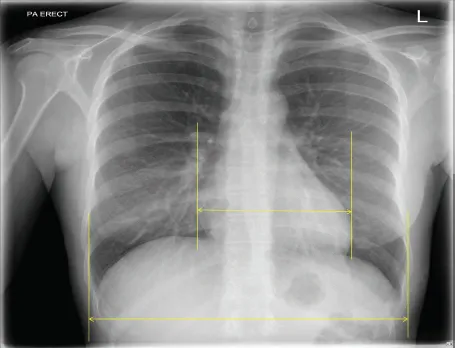
PA/AP/supine x-rays
Table of contents
- Cover Page
- Title Page
- Copyright
- Contents
- Introduction
- Acknowledgements
- 1 The radiographs and anatomy of the chest x-ray
- 2 A systematic approach to reviewing the chest image
- 3 Felson’s silhouette sign
- 4 Consolidation and collapse
- 5 Overview of cardiovascular disorders and heart failure
- 6 Lung tumours
- 7 Lung nodules
- 8 Chest trauma
- 9 Tubes, lines and pacemakers
- 10 Chronic chest conditions
- 11 Tuberculosis
- 12 60 cases
- References and further reading
- Index